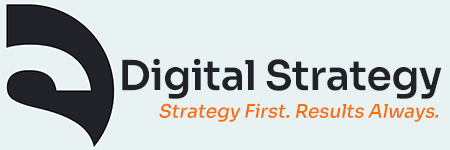Search engines are no longer just indexing pages — they’re evaluating trust, expertise, and authenticity. With Google’s emphasis on E-E-A-T (Experience, Expertise, Authoritativeness, and Trustworthiness), brands and agencies must rethink how they create and evaluate content.
But here’s the challenge: there’s no official scorecard. Unlike backlinks, bounce rates, or Core Web Vitals. E-E-A-T is subjective. So how can we measure it?
What Is E-E-A-T, and Why It Matters
- Experience – Does the author demonstrate knowledge?
- Expertise – Is the content written by someone with subject-matter credibility?
- Authoritativeness – Has the brand or author is recognized in the field?
- Trustworthiness – Is the information reliable, accurate, and backed or cited by sources?
Google highlights E-E-A-T in its Search Quality Rater Guidelines, and while it isn’t a direct ranking factor, it influences how content is interpreted by human raters and increasingly by AI-driven search results.
In the era of AI Overviews and GEO (Generative Engine Optimization), content that demonstrates strong E-E-A-T is more likely to be:
- Cited in AI-summarized SERPs
- Shared as authoritative resources
- Trusted by both readers and algorithms
The Role of Original Thought Pieces
One of the clearest ways to establish E-E-A-T is by publishing original insights, not recycled or replicated summaries.
- Become a Source: Original thought leadership positions the brand or author as a source, not a mere follower.
- Provide Stats: Data, case studies, or proprietary frameworks signal expertise and experience.
- Be Human: Opinion pieces with well-reasoned arguments show the human insight AI tools can’t replicate.
The Measurement Challenge: Why E-E-A-T Is Hard to Quantify
Unlike SEO metrics such as page speed or backlinks, E-E-A-T does not have a numeric benchmark.
- Experience is shown through tone, examples, and case studies — but not measurable by a tool.
- Expertise is validated by credentials or history — but varies across industries.
- Authority might be inferred from mentions, backlinks, or citations — but authority is contextual.
- Trust is partly technical (HTTPS, transparent policies) and partly editorial (citations, accuracy).
Even AI-driven search systems assess E-E-A-T qualitatively, often cross-checking multiple sources to validate claims.
Practical Ways to Assess E-E-A-T
While we can’t assign a number, we can evaluate whether a piece meets the spirit of E-E-A-T with these checks:
Experience
- Does the article include first-hand insights, examples, or case studies?
- Is there a clear “voice of experience” rather than generic information?
Expertise
- Is the author identified, with credentials or relevant background?
- Are complex concepts explained with clarity, showing true understanding?
Authoritativeness
- Does the content reference credible external sources (research, industry data)?
- Is the agency/author recognized or cited elsewhere in the industry?
Trustworthiness
- Are claims backed up with sources or data?
- Is the content free from factual errors or misleading language?
- Is the site technically secure (HTTPS, privacy policies, clear contact info)?
SEO, GEO, and AI-Driven SERPs: Why E-E-A-T Matters Even More Now
With AI-driven search (Google AI Overviews, Bing Copilot, Perplexity, etc.), content is parsed and summarized automatically. AI systems look for:
- Clear attribution of authorship
- Well-structured sections and schema markup (FAQ, HowTo, Article schema)
- Signals of credibility like outbound citations, authoritative backlinks, and brand recognition
This means an original thought piece with clear bylines, schema, and citations is far more likely to be quoted in AI answers and win exposure far beyond traditional organic rankings.
The Best Way to “Measure” E-E-A-T
Since no tool gives you a precise E-E-A-T score, the best assessment is editorial and strategic:
- Editorial Review: Ask, Would a reader trust this? Would a competitor cite this?
- Signals Audit: Check for author bios, references, citations, HTTPS, schema markup.
- Authority Tracking: Monitor backlinks, mentions, and whether content is cited in AI Overviews.
- Content Testing: Share on LinkedIn, newsletters, or industry forums — does it resonate and get engagement?
Ultimately, the measure of E-E-A-T is in its impact: Does it generate trust, visibility, and citations?
Final Thoughts
E-E-A-T may be subjective, but that’s exactly what makes it interesting and powerful. It forces content creators to focus on quality, originality, and credibility rather than mere checklists.
For agencies and brands, the way forward is:
- Write original thought leadership that reflects experience and expertise.
- Build authority and trust with citations, transparency, and consistent output.
- Optimize for both human readers and AI systems through structure, clarity, and authenticity.
At Digital Strategy USA, we work with businesses create content that not only ranks but earns trust in the era of AI-driven search.
Related article: What’s New in SEO in the Era of AI

